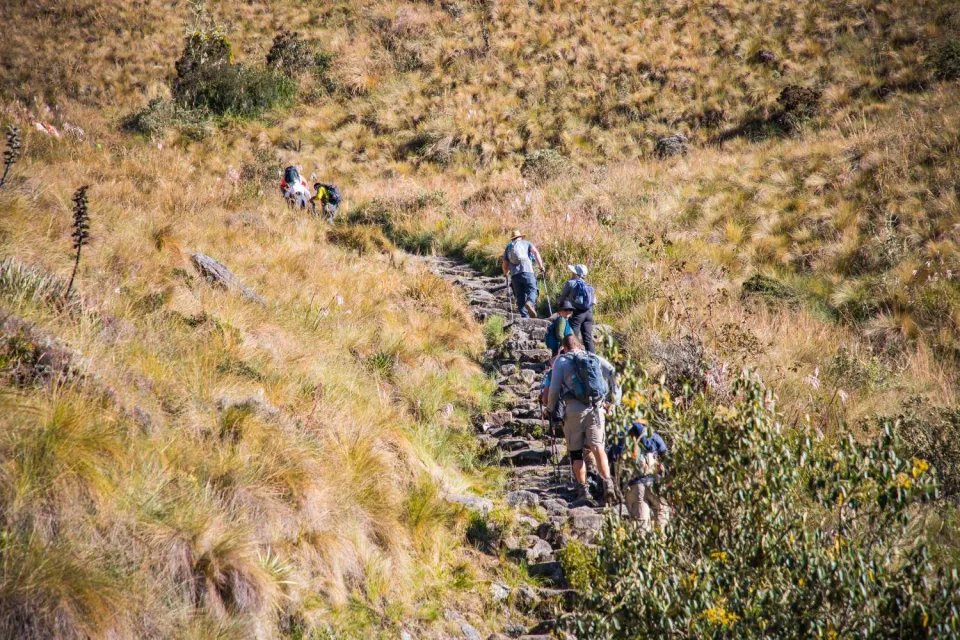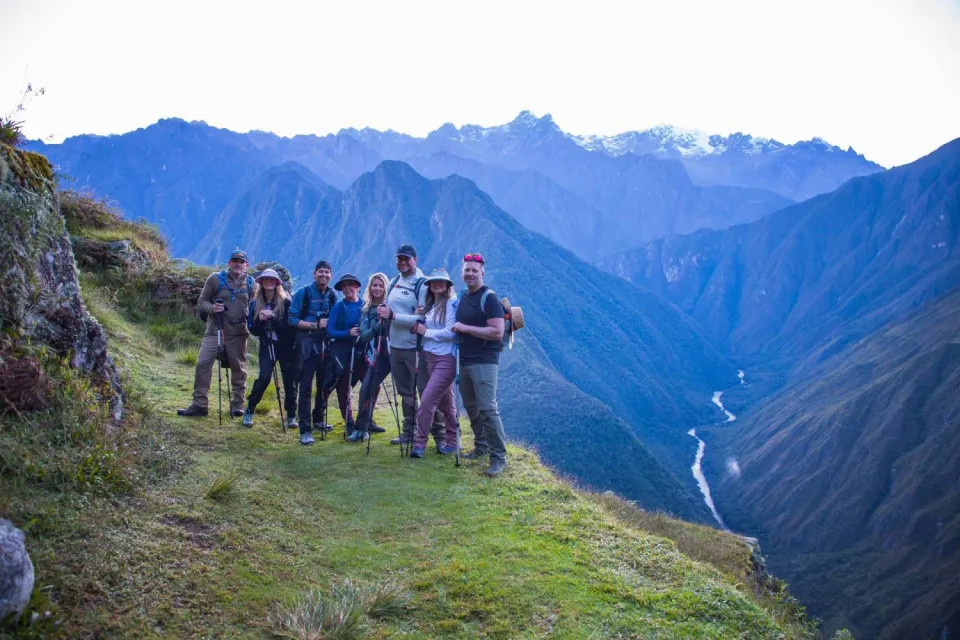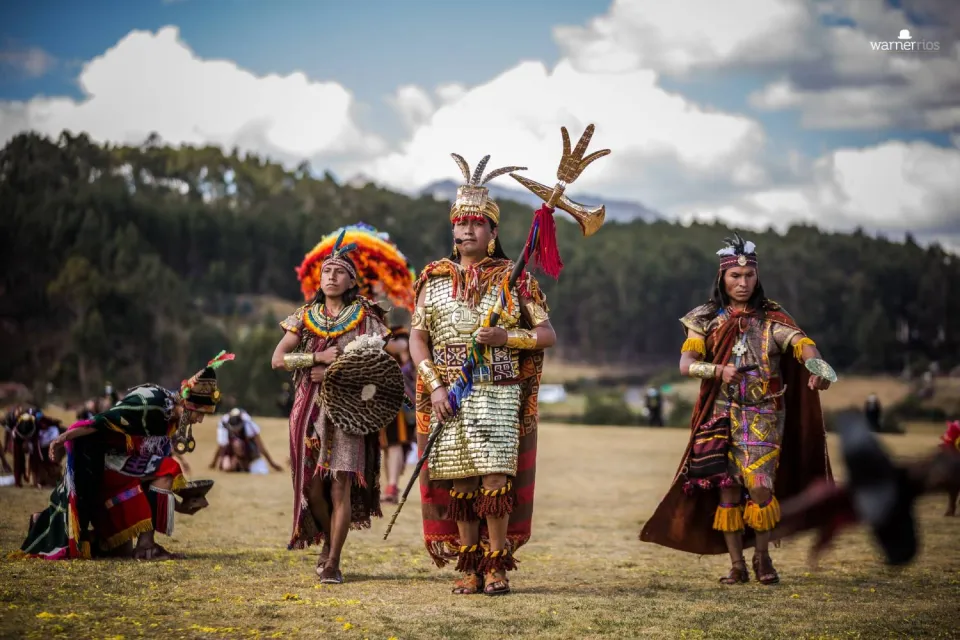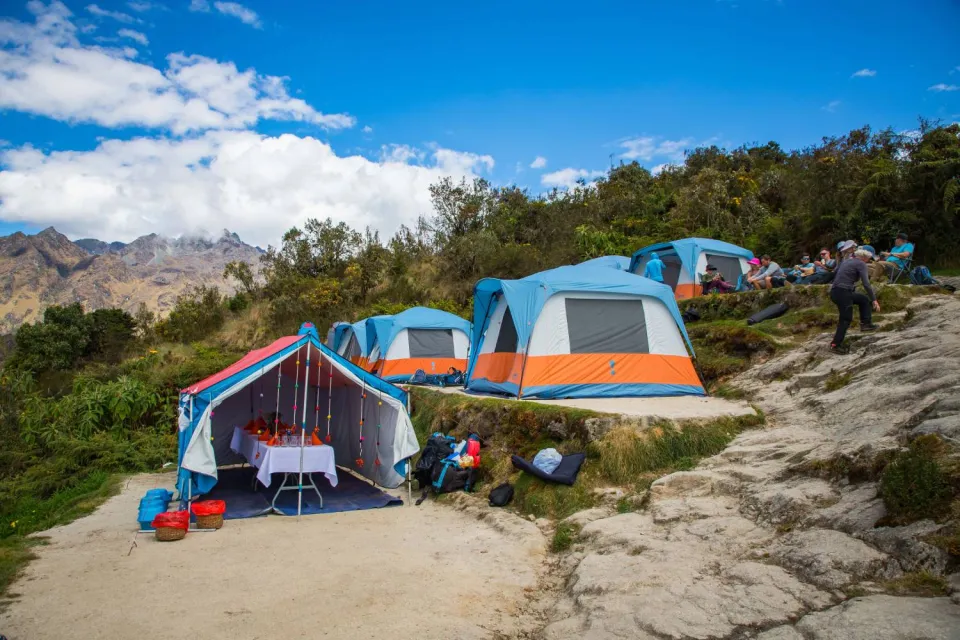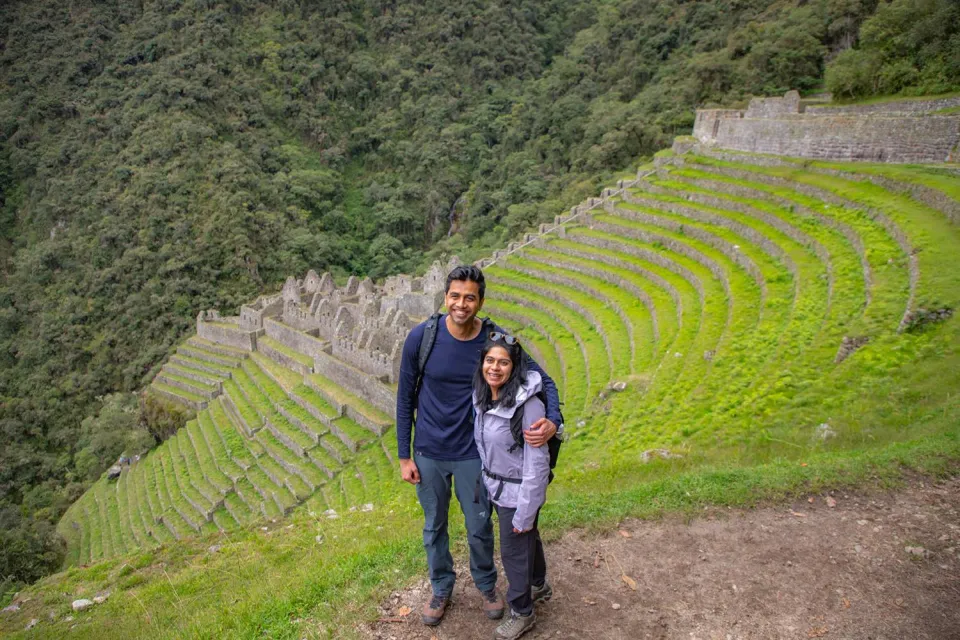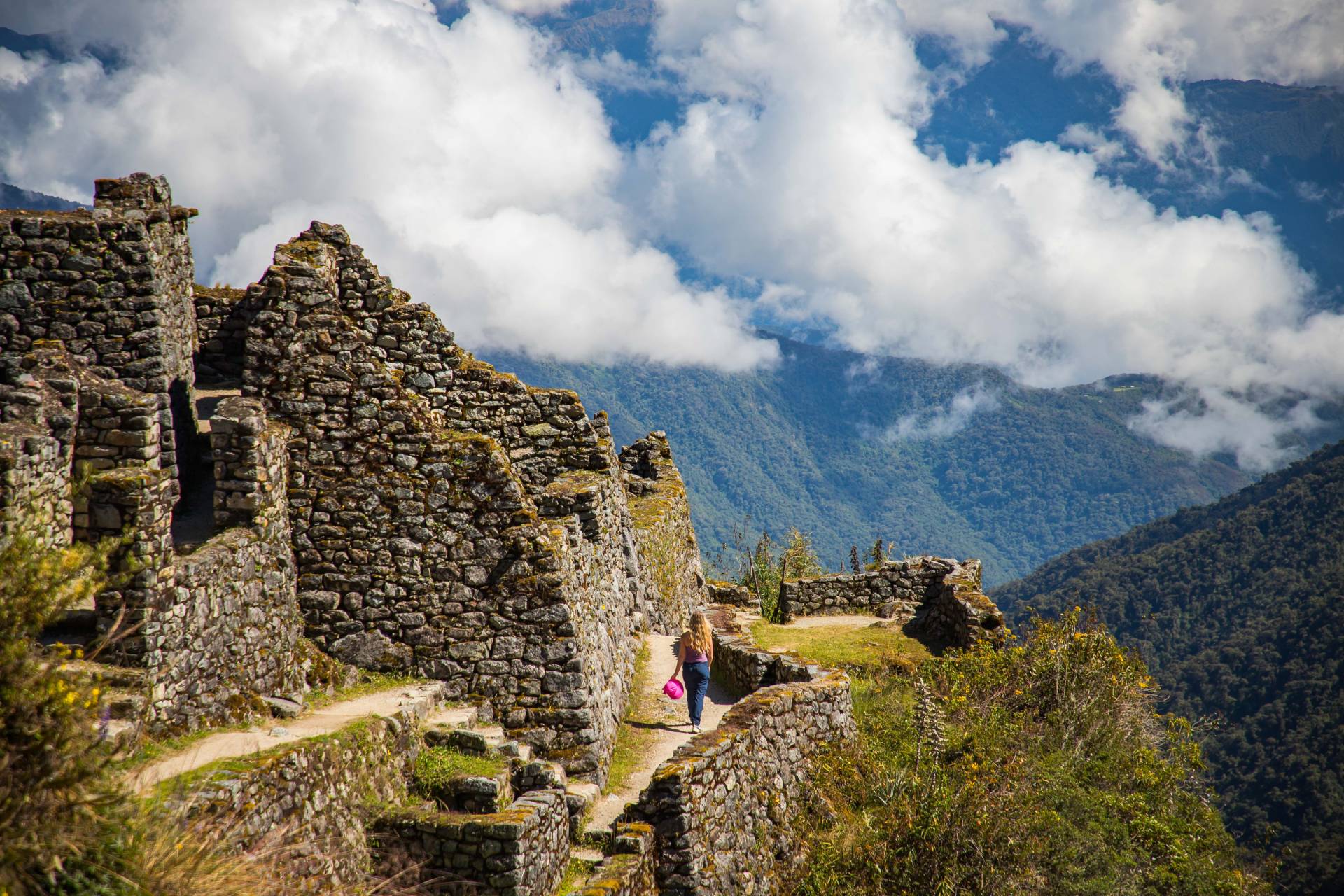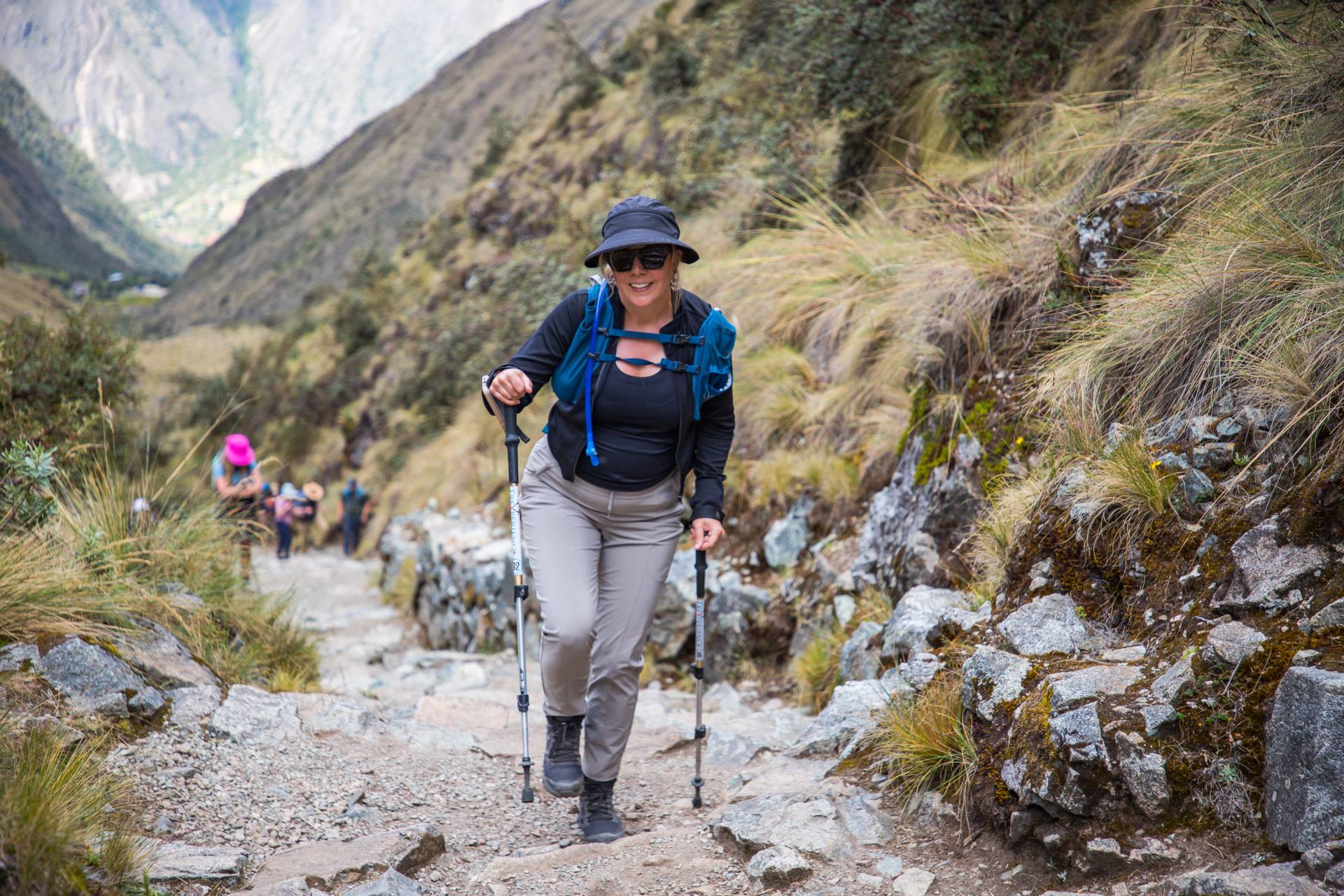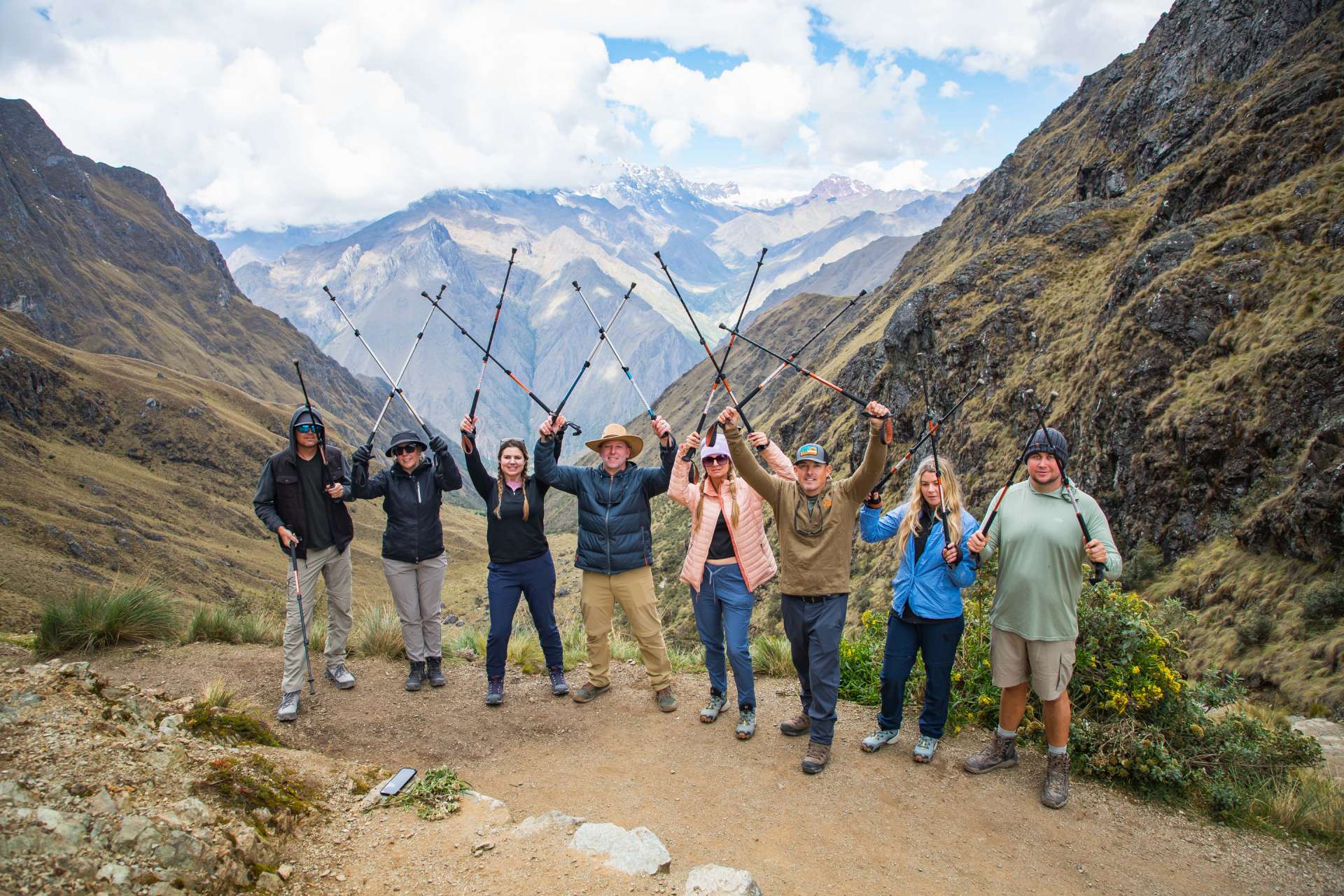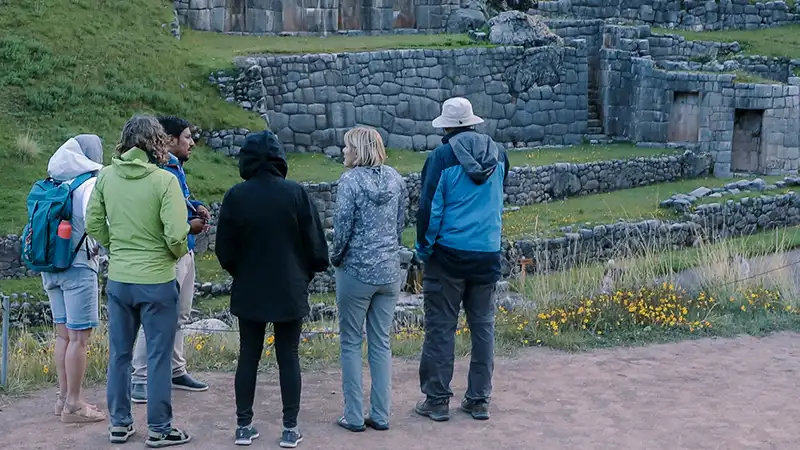Did you know that choosing the best time to hike the Inca Trail can make the difference between an epic trek and a mud-soaked disaster?
If you venture out in the wrong month, you could find yourself stuck on slippery trails and torrential rains, missing out on Machu Picchu's most breathtaking views. In this definitive guide, I reveal month by month when (and when not) to take the plunge.
Why is it important to choose the best time to walk the Inca Trail?
Before embarking on the adventure, it is essential to know the climatic and logistical conditions of the Inca Trail. This way, you will be able to:
- Enjoy breathtaking views and unforgettable landscapes.
- Avoid heavy rains and slippery trails.
- Find availability in the permits, which are usually sold out quickly.
- Live the experience with the safety and comfort you deserve.
Weather on the Inca Trail
The weather on the Inca Trail is divided into two main seasons:
Dry season (April to October)
During these months, the weather is ideal for hiking the Inca Trail:
- Sunny days and clear skies that offer panoramic views.
- Trails in good condition, less slippery and safer.
- Cold nights, especially between June and August (temperatures can drop to 0°C!).
Rainy season (November to March)
In this season, rains are more frequent, especially from December to March:
- Heavy rains that turn trails into real muddy challenges.
- Fog that sometimes hides the views, although it brings a mystical air.
Important: In February the Inca Trail closes for maintenance and conservation! There is no access during that month.
What is the best time to hike the Inca Trail?
The best time to hike the Inca Trail is during the first and last months of the dry season: April, May, September, October and early November
These months offer the best of both seasons:
- The sun is less intense but still present.
- Temperatures are cooler and more pleasant.
- There are fewer tourists, which means a quieter trail.
- Nature is exuberant, with landscapes in full bloom.
Many websites recommend traveling in June, July and August. It is true that these months are very popular and attract a large number of tourists, mainly because they coincide with the most important festivities in Cusco.
What do we mean? During June, while acclimatizing in Cusco, you can attend unforgettable celebrations in the Plaza de Armas:
- Typical dances.
- Religious processions.
- Concerts and many other events of Cusco's Jubilee month.
Most of these activities are free, although for the Inti Raymi (the festival of the Sun), it is better to buy tickets and enjoy the show from privileged boxes.
For this reason, these months are usually the most chosen. But what don't they tell you?
- During these months, the days have a very intense sun and the nights are very cold.
- Walking under a scorching sun can increase the difficulty of the trek.
- The landscapes are drier, with less vegetation.
If you are looking for something quieter, with less crowds, pleasant temperatures and landscapes full of life, the transition months such as April and October are perfect for you.
What is the worst time to hike the Inca Trail?
Now that you know which are the best months, you are probably wondering: and which are the worst?
January is considered the most complicated month. Why?
- The rains are intense, and the trails can be slippery and dangerous.
- Visibility is lower due to fog and rain.
- Roads can become impassable due to landslides.
- In addition, there is a risk of train delays due to landslides on the tracks.
In January 2020, a landslide caused the death of a porter and injured two of his companions. In January 2010, a tour guide and a visitor were killed in another landslide.
During February, the Inca Trail closes for maintenance due to heavy rains. Sometimes, this work lasts until the end of March.
In recent years, the Inca Trail has officially reopened on April 1. Don't be fooled if you are offered tickets for February or March!
Advantages and disadvantages of the Inca Trail
| Season | Advantages | Disadvantages |
| Dry season | Stable climate, dry trails, clear landscapes. | Cold nights, high demand for permits, more tourists. |
| Rainy season | Less tourists, green landscapes and flowering. | Muddy trails, risk of landslides, rains. |
The climate of the Inca Trail month by month
Let's see now what the Inca Trail weather is like each month, so that you can choose in more detail the best time for your adventure.
April and May
In these months, rainfall decreases because we are entering the dry season. The flora is at its peak and temperatures are cool for both walking and sleeping.
Advantages:
- You will be able to observe endemic plants in bloom, such as orchids.
- The Inca Trail is in excellent condition after annual maintenance.
- The mountains and landscapes have more vibrant colors.
- Fewer people on the trail.
- More availability of permits (if you are lucky, in March you might still be able to find quotas).
- Sometimes the rainbow phenomenon occurs.
- Holy Week in Cusco can coincide with April.
- Ideal month for photography, with spectacular scenery.
Disadvantages:
- Some light rains could surprise you.
- The view of Machu Picchu from Inti Punku is sometimes blurred by the presence of fog.
June, July and August
These are the busiest months of the year, as they coincide with the Cusco festivities and the summer vacations for those living in the northern hemisphere.
Advantages:
- Dry climate, without rain.
- Sunny days, with temperatures that can exceed 20 °C (68 °F).
- Clear skies for a full view of Machu Picchu from Inti Punku.
- Wildlife is very active: you will see birds and, at the waterfalls, deer.
- Starry nights ideal for observing the Milky Way.
- Coincides with Inti Raymi and Peru's Fiestas Patrias.
Disadvantages:
- Cold nights and mornings, with temperatures of 5 °C or even 0 °C.
- High demand for permits for the Inca Trail, the tourist train and the entrance to Machu Picchu.
- Drier landscapes, with brown and yellow colors due to the intense sun.
September, October and November
After the most crowded months, temperatures are milder and there are fewer tourists. No heavy rains yet.
Advantages:
- Light or almost non-existent rains.
- The landscapes begin to fill with colors thanks to the spring.
- Flora and fauna are in full bloom: you will be able to see hummingbirds pollinating orchids.
- Waterfalls are still visible.
- The trails are in good condition.
Disadvantages:
- Possibility of some light rain, especially in the afternoons.
- Mosquitoes are more active, so you should protect yourself from bites.
December
This month marks the beginning of the rainy season. Roads become slippery due to rainfall, sometimes with hail, and fog covers the route, making hiking more difficult.
Advantages:
- Mild weather. Nature begins to show its most intense colors.
Disadvantages:
- Roads more difficult to walk due to humidity and fog. Greater risk of landslides.
February and March
In February, the Inca Trail is closed for maintenance due to heavy rains, and part of March may also be affected.
Advantages:
- Discounts and deals on hotels, accommodations and other activities are usually available during these months.
Disadvantages:
- Risk of delays due to landslides and road closures.
- Dangerous and slippery roads.
- Maintenance may extend until the end of March.
Inca Trail Accommodations
During the 4-day Inca Trail trek, you will sleep in campsites organized by authorized agencies such as ours. These camps have the following characteristics:
- Dining tent: Here meals prepared by the trekking kitchen team are served. It is a comfortable and protected space to enjoy the food.
- Portable toilets: These are large toilets that the team moves from one camp to another for the comfort of the travelers. There are also fixed toilets in some camps, but they are usually quite rustic.
- Sleeping tents: These tents, shared by two people, are cold resistant and completely waterproof to protect you from the rain.
Tip: The only shower during the Inca Trail is at the Wiñay Wayna camp. Take advantage of this opportunity to have a good bath!
Tips for a quiet excursion
Book in advance
The Inca Trail is very popular, especially in high season, so I recommend booking several months in advance to secure your spot and have the hike of a lifetime.
Consider alternatives
If you don't manage to get a spot on the classic Inca Trail, don't worry: there are epic routes that also reach Machu Picchu, such as the Salkantay Trek, the Short Inca Trail, the Lares Trek or the Inca Jungle. These options are easier to book and offer incredible scenery.
Prepare your luggage efficiently.
Carry only the essentials, as every kilo counts: it will be the weight you will have to carry during the entire trek. Pack judiciously and prioritize what is necessary.
Be physically prepared
The Inca Trail has some difficulty. I advise you to do endurance exercises months before, especially to strengthen your legs and be in shape for the challenge.
Acclimatize before the hike
It is essential to spend a few days of acclimatization before starting the trek. This will help you avoid altitude sickness or "soroche", whose symptoms can range from mild to dangerous.
Visit Machu Picchu
When you arrive at Machu Picchu, I recommend you choose Circuit 2 to see the best of the citadel or Circuit 3 to visit the sacred Inca buildings. This way you will enjoy the experience to the fullest.
Plan your trip
Choosing the best time to hike the Inca Trail is key for your adventure to be incredible and safe. With this guide you have all the information to decide in which month to travel, understand the weather month by month, know the advantages and disadvantages of each season and be ready to enjoy the 4-day Inca Trail to the fullest.
Now all you need to do is plan your trip and embark on the experience of a lifetime!

